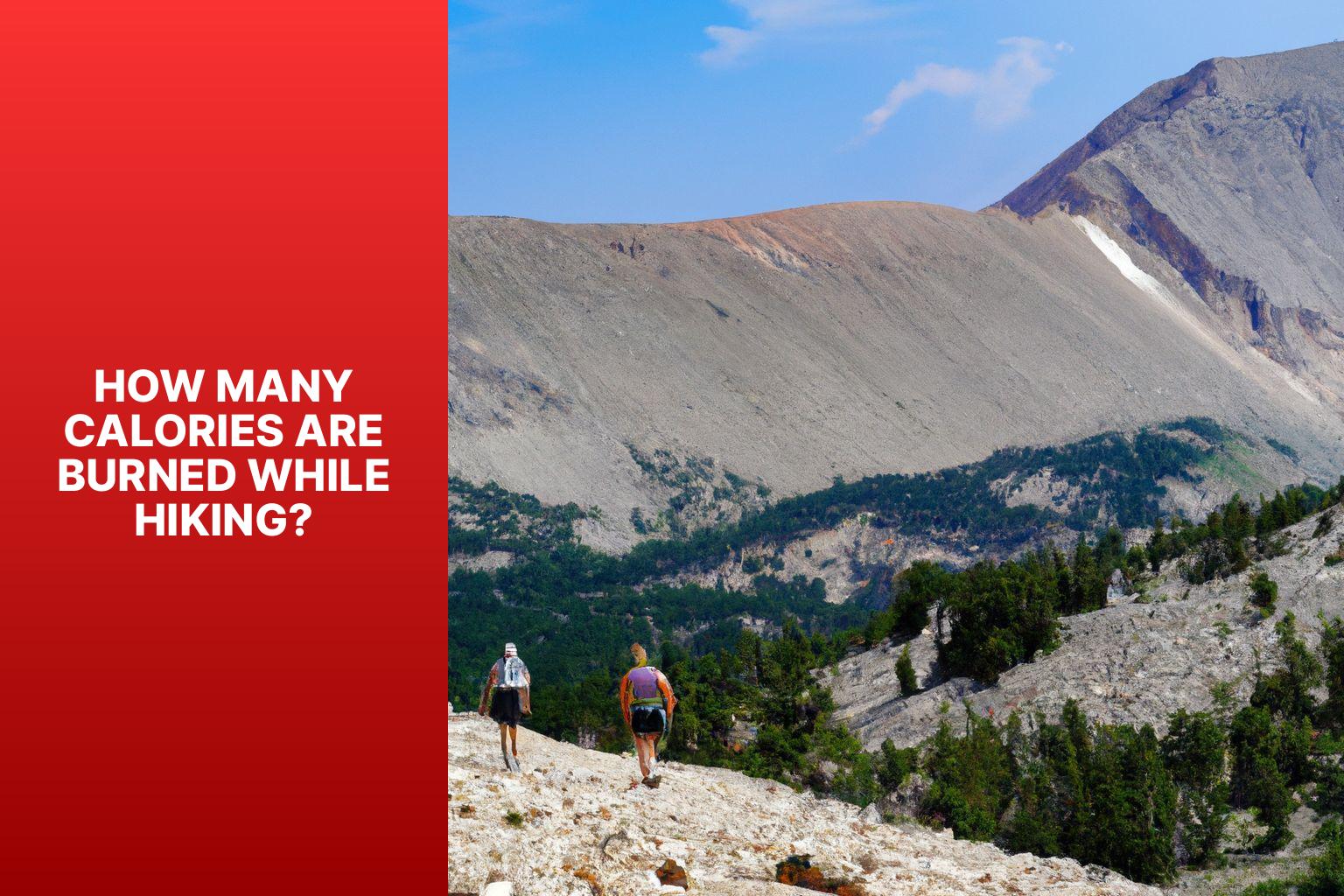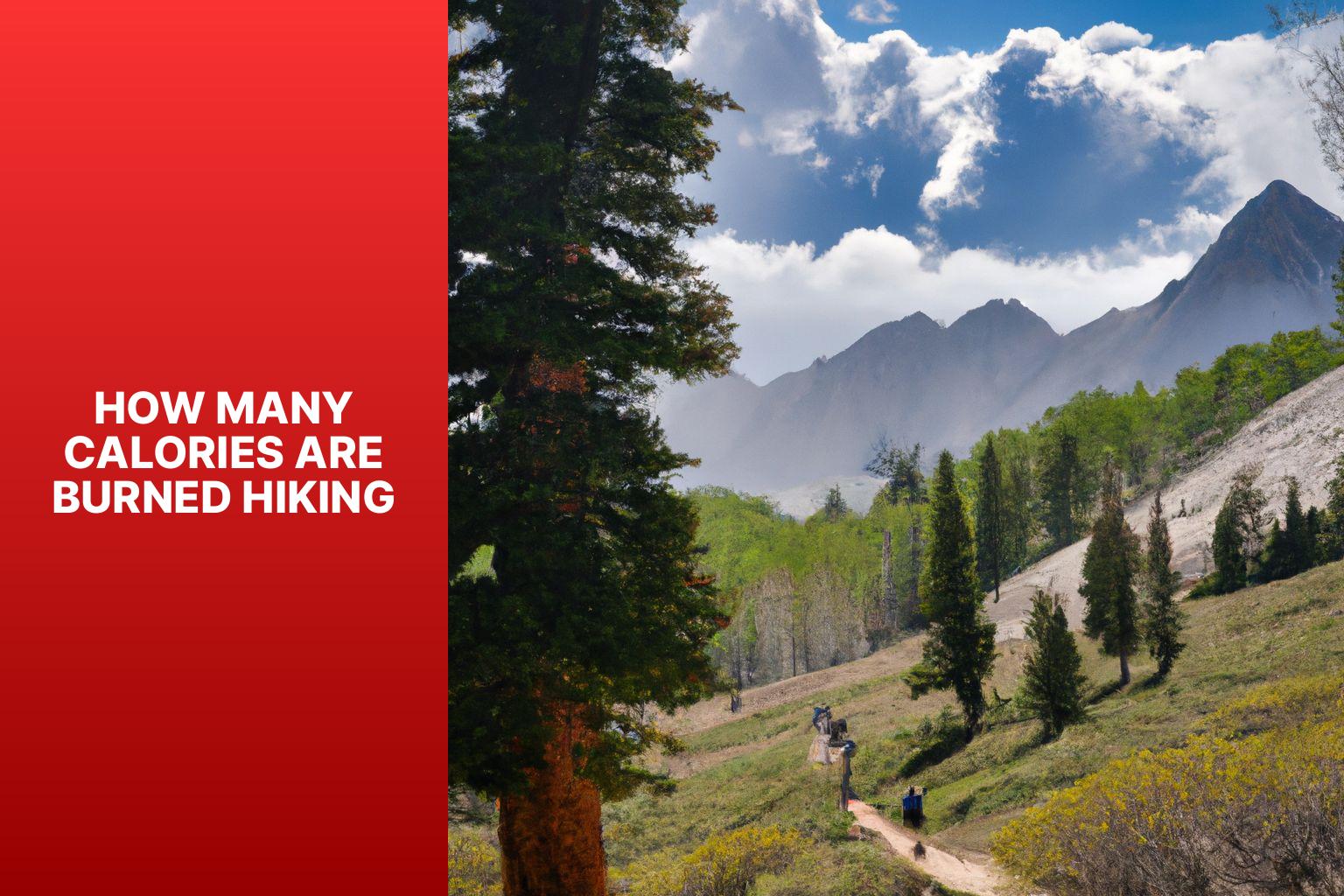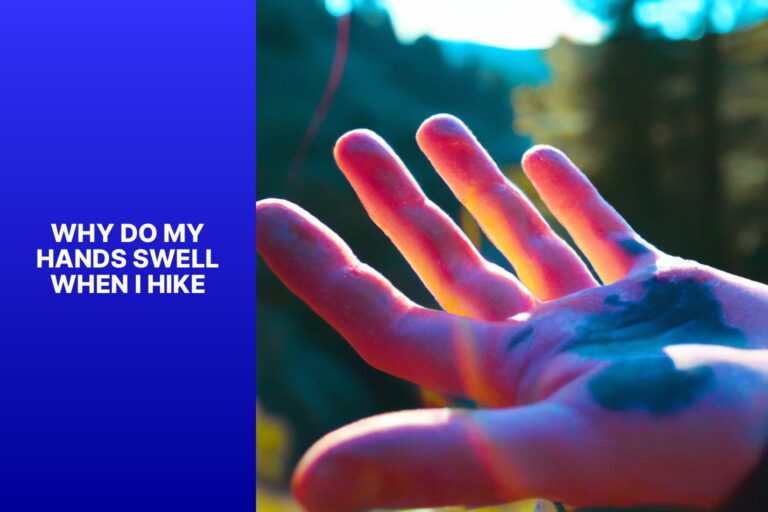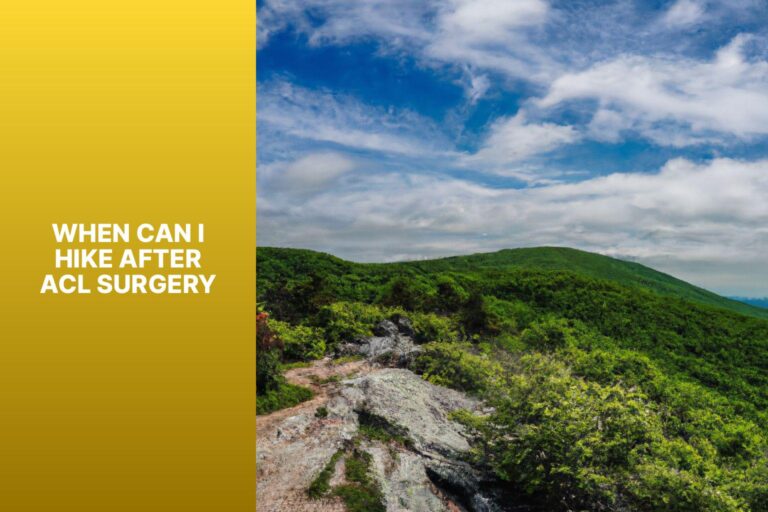How Many Calories Are Burned Hiking
Hiking is not only a great way to explore the outdoors and connect with nature but also an excellent form of physical activity.
It provides a full-body workout and can help burn calories.
The number of calories burned while hiking depends on various factors.
Understanding the relationship between hiking and weight loss, calculating calorie burn, and maximizing calorie burn can be beneficial in achieving fitness goals.
Hiking offers numerous benefits beyond calorie burn.
By delving into these aspects, we can gain a better understanding of the impact of hiking on our overall health and well-being.
Key takeaway:
- Hiking burns calories: Hiking is a great way to burn calories and support weight loss. The number of calories burned depends on factors such as body weight, hiking distance and intensity, as well as the terrain and elevation gain.
- Maximize calorie burn during hiking: To maximize calorie burn while hiking, choose challenging trails, increase speed and intensity, and utilize elevation changes. These strategies can help increase the calorie burn and overall effectiveness of a hiking workout.
- Benefits beyond calorie burn: Hiking offers numerous benefits beyond calorie burn, including improved cardiovascular fitness, stress reduction, and connection with nature. It is a holistic activity that contributes to overall well-being.
How Many Calories Are Burned While Hiking?

Photo Credits: Jasonexplorer.Com by Ronald Lopez
Hiking is not just about exploring nature; it’s also a way to burn calories and stay active. In this section, we’ll dig into the question that many outdoor enthusiasts ask: how many calories are burned while hiking? We’ll uncover the various factors that come into play, influencing the calorie burn during a hike. So, if you’re curious to learn how your speed, terrain, and even backpack weight affect your calorie expenditure on the trails, read on. It’s time to uncover the truth behind hiking and calorie burn.
Factors Affecting Calorie Burn
- Your body weight determines the calories burned while hiking. The more you weigh, the more calories you burn. On average, a person weighing 160 pounds can burn around 430 calories per hour while hiking.
- Hiking Distance and Intensity: The distance and intensity of your hike also affect calorie burn. Longer and more challenging hikes burn more calories. Hiking uphill or on uneven surfaces requires more effort and burns more calories compared to hiking on flat terrain.
- Terrain and Elevation Gain: The type of terrain and elevation gain impact calorie burn. Hiking on steep inclines or rugged trails requires more energy and increases calorie burn. A hike with varied terrains, such as uphill and downhill sections, also boosts calorie burn.
By considering these factors, you can plan your hikes to maximize calorie expenditure and achieve weight loss goals. Remember, the more challenging the hike, the more calories you burn. Gradually increase hike intensity to avoid overexertion or injury, taking individual fitness levels into account. Incorporating these factors into your hiking routine enhances calorie burn, improves well-being, and allows you to enjoy the beauty of nature.
The Relationship Between Hiking and Weight Loss

Photo Credits: Jasonexplorer.Com by Albert Gonzalez
Hiking isn’t just about exploring nature and challenging yourself physically it can also be a key player in your weight loss journey. In this section, we’ll uncover the relationship between hiking and shedding those extra pounds. Get ready to discover how hiking supports weight loss, as we dive into the various ways this outdoor activity can help you achieve your fitness goals. So grab your hiking boots, because we’re about to explore the incredible benefits of hitting the trails!
How Hiking Supports Weight Loss
Hiking is a highly effective activity for weight loss, and here’s how it supports weight loss:
1. Burns Calories: When you go hiking, you can burn a significant amount of calories. On average, a person weighing 160 lbs can burn around 430-440 calories per hour of hiking, depending on factors such as speed, terrain, and weight.
2. Increases Metabolism: Regular hiking sessions can actually boost your resting metabolic rate, which means you can burn more calories even when you’re not active.
3. Builds Muscles: Hiking engages various muscle groups in your body, including your core, glutes, thighs, and calves. This helps to tone and strengthen your muscles, resulting in a higher calorie burn.
4. Improves Cardiovascular Health: Hiking is a fantastic cardiovascular workout that can strengthen your heart and improve blood circulation. Engaging in regular cardiovascular exercise through hiking can contribute to weight loss and overall well-being.
5. Reduces Stress and Boosts Mood: When you go hiking in nature, it has been proven to lower stress levels and improve your mental health. Having a positive state of mind can promote adherence to a healthy lifestyle and make better choices when it comes to weight loss.
Pro-tip: If you want to maximize weight loss during your hiking sessions, consider incorporating interval training. This means alternating between brisk walking and faster-paced hiking, which can intensify your workout and increase the number of calories you burn.
Factors That Determine Calorie Burn During Hiking
Discover the key factors that contribute to calorie burn during hiking. From your body weight to the distance and intensity of your hike, as well as the type of terrain and elevation gain you encounter, each element plays a role in determining how many calories you’ll burn on the trail. Get ready to uncover the science behind hiking calorie burn and uncover tips to maximize your calorie-burning potential while immersing yourself in the great outdoors.
1. Body Weight
1. Body weight significantly impacts the number of calories burned during hiking. When considering the factors below, it’s important to understand the role body weight plays:
– Higher body weight = more calories burned: A heavier body requires more energy to move, resulting in a higher calorie burn during activities like hiking.
– Calorie burn is directly proportionate to body weight: Research suggests that for every pound of body weight, approximately 0.57 calories are burned per mile of hiking. Therefore, individuals with a higher body weight will burn more calories compared to those with a lower body weight.
– Weight loss enhances calorie burn: Engaging in regular physical activities like hiking can lead to weight loss over time. The reduction in body weight results in a decrease in the number of calories burned during hiking sessions. It is worth noting that maintaining weight loss is possible through consistent physical activity, including hiking.
– Body composition matters: It is crucial to recognize that body composition, including muscle mass, has an impact on calorie burn. Muscles tend to burn more calories than fat, indicating that individuals with higher muscle mass may experience a slightly higher calorie burn while hiking.
Understanding how body weight influences calorie burn during hiking allows individuals to plan and adjust their hiking routines to meet their fitness goals. Remember to prioritize enjoyment and safety while hiking, and always listen to your body by maintaining a comfortable and sustainable pace and intensity.
2. Hiking Distance and Intensity
Hiking Distance and Intensity
When you go hiking, the distance and intensity of your hike play a vital role in determining the number of calories you burn and the overall health and fitness benefits you experience.
– Hiking Distance: The distance you cover during your hike significantly impacts the number of calories you burn. This means that the longer the distance you hike, the more calories you will burn. For instance, if you hike 5 miles, you can expect to burn around 400-600 calories. On the other hand, hiking 10 miles can result in burning approximately 800-1200 calories.
– Hiking Intensity: The intensity of your hike also affects the number of calories you burn. Hiking on uphill terrains or uneven surfaces requires more effort, engaging a greater number of muscles and resulting in burning more calories compared to hiking on flat ground. The uphill hike demands additional energy expenditure due to its higher intensity.
– Combination of Distance and Intensity: The most effective way to maximize calorie burn during hiking is by combining short distances with high intensity. This can be achieved by incorporating steep inclines or rugged terrains into your hike. Such challenging conditions burn more calories in comparison to longer distances on flat ground.
– Individual Factors: It is important to consider your body weight and fitness level as they influence the number of calories you burn during hiking. Individuals with higher body weights tend to burn more calories during physical activities like hiking.
– Conditions and Gear: Various factors like weather conditions, backpack weight, and hiking gear can affect the intensity of your hike and consequently impact the number of calories burned.
By carefully considering both distance and intensity, you can customize your hiking routine to maximize calorie burn and achieve your fitness goals. Make sure to gradually increase the distance and intensity over time to avoid overexertion and ensure a safe and enjoyable hiking experience.
3. Terrain and Elevation Gain
Terrain and elevation gain significantly impact hiking intensity and calorie burn. When hiking, it is essential to consider the terrain and elevation gain to get the most out of your workout.
Uphill climbing on steep inclines engages different muscle groups and can increase calorie burn by up to 30%. So, when choosing a trail, opt for ones that have significant elevation gain for a more effective calorie expenditure.
On the other hand, downhill descent also requires energy and engages your muscles for speed and balance. Hiking on uneven or rocky terrain can further increase the intensity of your hike and help burn more calories.
Challenging terrain, such as uneven or rugged paths, demands more strength and balance, which in turn enhances calorie burn. Obstacles like rocks or tree roots present additional challenges, making your workout even more intense.
Altitude also plays a role in calorie burn during hiking. Higher altitudes with lower oxygen levels require more energy, resulting in a higher calorie expenditure.
Your hiking speed affects calorie burn. Walking at a brisk pace or incorporating intervals of faster hiking can increase the intensity of your workout and boost calorie burn.
To ensure stability and safety while hiking in terrains with elevation gain, make sure to wear proper footwear and use hiking poles. It is also essential to choose trails that are suitable for your abilities and stay hydrated throughout the hike. Taking breaks as needed will prevent fatigue or injuries.
Embrace the exciting challenges that terrain and elevation gain offer while hiking. Not only will you get to explore diverse landscapes, but you will also burn calories and improve your fitness in the process.
Calculating Calorie Burn While Hiking

Photo Credits: Jasonexplorer.Com by John Lopez
When it comes to hiking, knowing how many calories you burn can be a game-changer. In this section, we’ll explore how you can calculate your calorie burn while hitting the trails. Get ready to dive into the world of fitness trackers and apps, and discover how they can help you accurately track your calorie expenditure. We’ll also explore the concept of metabolic equivalents and how it relates to calorie burn during hiking. So lace up your boots and let’s delve into the fascinating realm of calorie burn while hiking!
Using Fitness Trackers and Apps
Using fitness trackers and apps can greatly enhance the hiking experience. These technological tools offer a multitude of benefits when it comes to tracking and monitoring hiking activities. One of the advantages is the accurate data that fitness trackers and apps provide. Utilizing GPS technology, these devices can precisely measure the distance, duration, and calories burned during a hike.
Another advantage is the ability to track progress over time. Fitness trackers and apps allow hikers to compare their performance, set improvement goals, and monitor their progress along the way. This can be incredibly motivating, as seeing progress and achievements can inspire hikers to continue pushing further.
Workout planning is made easier with the help of fitness trackers and apps. These tools enable hikers to plan and customize their hikes, set specific goals for calorie burn or distance, and even receive recommendations for routes. This ensures that hikers can make the most out of their hiking adventures.
The social features of fitness trackers and apps also contribute to the hiking experience. Hikers can connect with other like-minded individuals, share their achievements, join challenges, and gain inspiration from the hiking community.
Moreover, fitness trackers and apps provide in-depth analysis and insights into hiking data. Hikers can view their heart rate, track elevation changes, and determine workout intensity. These insights can help hikers understand their performance and make adjustments for future hikes.
Regardless of whether you are a beginner or an experienced hiker, incorporating fitness trackers and apps into your hiking routine is highly beneficial. These technologies offer valuable data, motivation, and insights that can maximize your hiking adventures. So why not take advantage of using fitness trackers and apps to elevate your hiking experience?
Metabolic Equivalents and Calorie Burn
Metabolic Equivalents and Calorie Burn:
To comprehend the calorie burn during hiking, it is important to consider the concept of metabolic equivalents (METs). METs are utilized to measure the energy expenditure during physical activities, representing the amount of oxygen consumed in relation to the resting metabolic rate. It should be noted that higher MET values result in a greater calorie burn.
The table below showcases the MET values for different levels of activity intensity during hiking:
By referring to these MET values, it is possible to estimate the amount of calories burned while hiking. On average, an individual weighing 150 pounds can burn approximately 240-350 calories per hour of hiking, depending on the intensity level and terrain.
A Pro-Tip for maximizing calorie burn is to select challenging trails that offer varying terrains and elevation changes. By increasing speed and intensity, one can elevate the heart rate and subsequently burn more calories. It is also crucial to stay hydrated and provide the body with nutritious snacks to maintain energy levels during longer hikes.
By understanding and leveraging the concept of metabolic equivalents, one can effectively burn calories and make the most of their hiking experience.
Tips to Maximize Calorie Burn During Hiking
Looking to burn some serious calories while hiking? Look no further! In this section, we’ll explore some fantastic tips to maximize your calorie burn during those adventurous treks. From tackling challenging trails to ramping up speed and intensity, along with taking full advantage of elevation changes, we’ve got you covered. So get ready to make the most of your hiking experience and torch those calories with these smart strategies!
1. Choose Challenging Trails
Choose Challenging Trails
Choosing challenging trails enhances your hiking experience and provides a more intense workout. Follow these steps when selecting challenging trails:
- Research difficulty levels: Look for trail ratings or descriptions that indicate the difficulty. Choose trails labeled as difficult for a more challenging hike.
- Consider elevation gain: Trails with significant elevation gain offer a greater challenge. Look for trails with steep inclines or mountains. The steeper the ascent, the more challenging the trail.
- Length of the trail: Longer trails can be more physically demanding, especially if they have challenging terrain or require climbing. Select longer trails to increase the challenge.
- Technical obstacles: Look for trails with boulders, rocky terrain, or narrow paths. Negotiating these obstacles requires strength, balance, and agility.
- Varying terrain: Choose trails with rugged paths, uneven surfaces, or water crossings. This engages different muscle groups and makes the hike more challenging.
- Seek challenging destinations: Consider trails that lead to unique viewpoints, waterfalls, or landmarks. The effort required to reach these destinations adds an extra layer of challenge and motivation.
- Be prepared: Remember to bring sufficient water, snacks, appropriate clothing, and necessary safety equipment for a challenging hike.
Choosing challenging trails increases the physical demands of your hike and adds excitement and a sense of accomplishment. It allows you to push your limits and cultivate both physical and mental proficiency during your hiking adventures.
Avid hikers have always sought out challenging trails to test their endurance and connect with nature in a profound way. The desire to conquer steep mountains, navigate treacherous paths, and face demanding terrains has driven hikers to explore the great outdoors and push their limits. Today, with trail ratings and detailed information available, it is easier than ever to choose challenging routes that cater to our adventurous spirit and desire for physical fitness. So, lace up your hiking boots, take on the challenge, and embark on a rewarding journey through the wilderness.
2. Increase Speed and Intensity
Increasing speed and intensity during hiking can significantly impact calorie burn and overall fitness. Consider the following key points:
1. Hike at a brisk pace: Boost the intensity of your workout and burn more calories by maintaining a steady and challenging pace throughout your hike.
2. Incorporate interval training: Elevate your heart rate and increase calorie burn by adding short bursts of high-intensity activity, such as jogging or power walking, into your hike.
3. Utilize inclines: Maximize intensity by seeking out hilly or steep trails. Uphill sections require more effort and engage different muscle groups, leading to higher calorie expenditure.
4. Add weight: Increase intensity by carrying a backpack with some extra weight. Start with a light load and gradually increase as you build strength and endurance.
5. Stay hydrated: As you increase speed and intensity, prioritize hydration. Carry enough water, especially on longer and more intense hikes.
6. Listen to your body: Push yourself, but also pay attention to your body’s signals. Gradually increase speed and intensity over time to avoid overexertion and the risk of injury.
By increasing speed and intensity during hikes, you can enhance calorie burn, cardiovascular benefits, and overall fitness gains. Remember to prioritize safety, hydration, and gradually increase intensity to achieve your fitness goals effectively.
3. Utilize Elevation Changes
Utilizing elevation changes enhances hiking workouts and provides additional benefits. Here are some ways to optimize your hiking experience by utilizing elevation changes:
-
Incorporate uphill sections: By utilizing elevation changes, you can engage your leg muscles more intensely, increasing calorie burn and strengthening your lower body. It also challenges your cardiovascular system, boosting endurance and stamina.
-
Take advantage of downhill portions: When you utilize elevation changes during your hike, going downhill improves stability, balance, and puts less strain on your joints compared to walking on flat terrain, reducing the risk of knee injuries.
-
Vary the steepness: To diversify your workout, look for trails with different incline levels. Steeper inclines provide a more challenging workout, while gradual slopes allow for active recovery. Mixing these variations trains different muscle groups and adds variety to your hiking routine.
-
Use elevation changes for interval training: Maximize calorie burn and stimulate muscle growth by incorporating intervals of hiking uphill and downhill. Start with a moderate pace on uphill sections and increase intensity on downhill portions to intensify your workout.
Utilizing elevation changes during hikes increases calorie burn, improves cardiovascular health, strengthens muscles, and enhances the overall hiking experience.
Benefits of Hiking Beyond Calorie Burn

Photo Credits: Jasonexplorer.Com by Noah Adams
Hiking has numerous benefits that go beyond simply burning calories. Consider the following advantages:
-
Enhanced Cardiovascular Health: Hiking greatly improves cardiovascular fitness, thanks to uphill climbs and diverse terrains. It strengthens the heart and reduces the risk of heart disease.
-
Increased Muscle Strength and Endurance: Hiking involves multiple muscle groups, including the legs, glutes, core, and arms. Navigating through uneven terrain and inclines helps build strength and endurance.
-
Improved Mental Well-being: Being surrounded by nature while hiking can effectively reduce stress, anxiety, and depression. It allows you to disconnect from the pressures of daily life and enjoy the outdoors, which boosts your mood and enhances mental well-being.
-
Enhanced Balance and Coordination: Hiking on uneven ground challenges your balance and coordination, ultimately improving overall stability and reducing the risk of falls.
-
Vitamin D Synthesis: While hiking, your exposure to sunlight enables your body to produce vitamin D. This is essential for bone health, immune function, and regulating mood.
Pro-tip: Make your hiking experience more enjoyable by bringing along a friend or family member. Hiking together not only adds social connection but also provides support.
So, don’t just focus on burning calories embrace the holistic benefits of hiking.
Frequently Asked Questions
How many calories are burned hiking?
The number of calories burned while hiking depends on various factors such as body weight, hiking duration, terrain, and intensity of hiking. A calculator can provide an estimate of the calories burned during a hike by taking into account these factors.
How does weight affect caloric burn during hiking?
Weight plays a significant role in determining the number of calories burned while hiking. Heavier individuals tend to burn more calories compared to lighter individuals during the same duration of hiking due to the increased energy required to move the body.
Does hiking terrain impact the number of calories burned?
Yes, the terrain of the hiking path affects the number of calories burned. Hiking on uneven, rocky ground or steep uphill sections requires more effort and results in higher calorie burn compared to walking on flat and smooth terrain.
Can a hiking calculator accurately estimate the number of calories burned?
Yes, a hiking calculator can provide a useful estimate of the calories burned during a hike. It takes into account factors such as body weight, hiking duration, terrain, and intensity to provide a reasonable approximation of the calories burned.
Is hiking a good exercise for weight loss?
Yes, hiking is an effective exercise for weight loss. It can burn a significant amount of calories, especially when combined with a calorie deficit through reduced calorie intake. The amount of weight lost depends on overall habits and approach to weight loss goals.
What are the benefits of hiking for overall health?
In addition to calorie burn and potential weight loss, hiking offers numerous benefits for overall health. It provides an opportunity for cardiovascular exercise, strengthens muscles and bones, improves mental well-being, and allows people to connect with nature.







